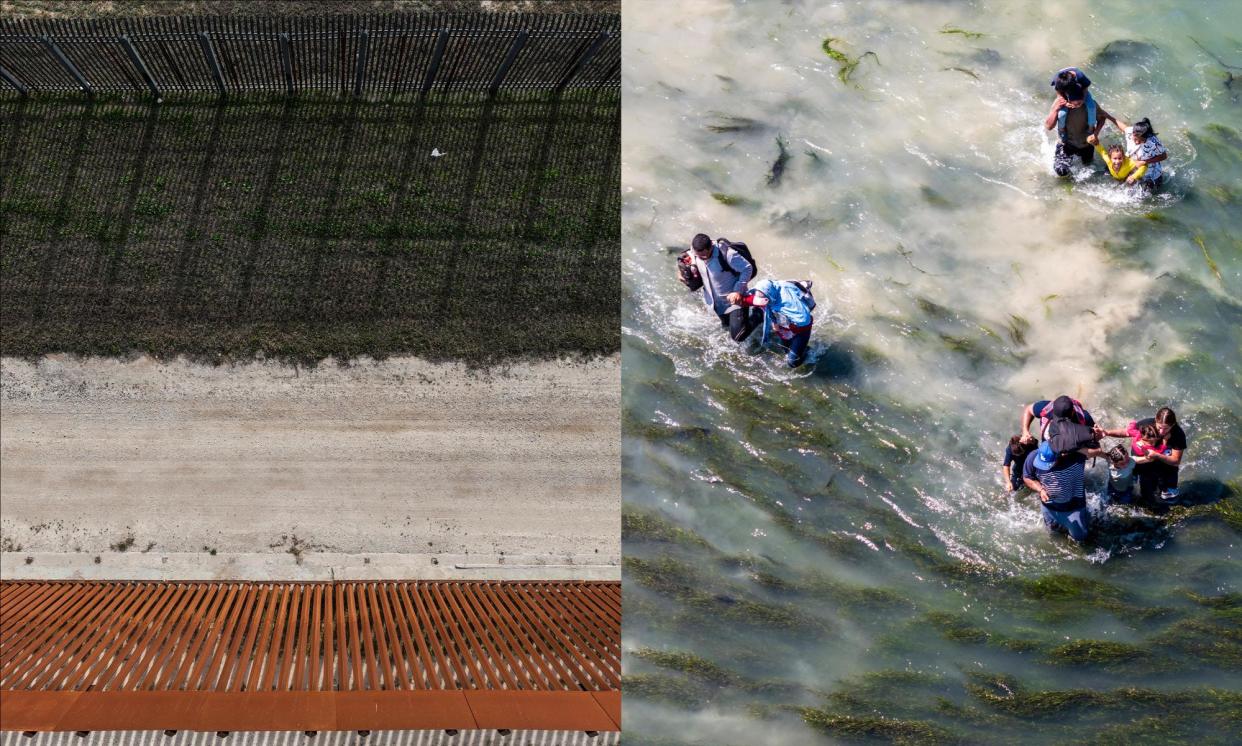The unprecedented situation at the US-Mexico border – visualized

Record levels of migration are straining an immigration system left nearly broken by decades of congressional inaction.
Republicans have spent years amplifying scenes of turmoil and tragedy at the southern border, but Democratic leaders are also worried now, particularly big-city mayors and blue state governors who are demanding more federal resources to shelter and feed an influx of migrants.
With many voters now saying immigration is a top priority, what exactly is happening at the US border to make so many people concerned?
***
There has been a surge of encounters at the US border
Since the pandemic there has been a spike in global migration, coinciding with Joe Biden’s presidency. Across the globe, people are fleeing war, political insecurity, violence, poverty and natural disasters. Many of those in Latin America, in particular, travel to the US in search of safety.
In the last three years, the number of people attempting to cross the US’s southern border into the country has risen to unprecedented levels.
In the month of December 2023 alone, border patrol agents recorded 302,000 encounters (these include apprehensions and immediate expulsions), a new high. The monthly average from 2013 to 2019 was 39,000.
***
Arrivals are coming from more countries
The collapse of Venezuela, political instability in Haiti, violence in Ecuador, a crackdown in Nicaragua, Russia’s invasion of Ukraine, repression in China and other conflicts have fueled a historic shift in migration patterns.
Mexico was the single most common origin country for US border encounters in 2023, but Mexican nationals made up less than 30% of the total share, compared with more than 60% a decade ago.
***
Their journey is more perilous
Nearly 9,000 people attempting to reach the US from the south have been recorded missing or dead in the Americas in the past 10 years, according to the Missing Migrants Project.
Some never make it through the notorious Darién Gap at the southern end of Central America, where a US deal with Panama and Colombia to stop migrants in their tracks has caused an outcry.
The vast majority of recorded fatalities (5,145), however, occur at the US-Mexico border crossing, according to the project’s data.
Many of the deaths occurred in southern Arizona when people attempted to cross open desert, miles from any roads.
Fatalities are also concentrated along the treacherous stretch of south-western Texas where the Rio Grande river becomes the borderline. Further inland, hundreds of deaths have been recorded in the sparse, humid scrubland around Falfurrias.
***
Their cases languish in courts
The border rules are complicated: some people apprehended at the border will face expedited deportation, but others will enter formal deportation proceedings and qualify for temporary release into the US, with a date to appear before a judge.
Resolving those immigration cases and asylum claims can take years. The backlog of immigration cases has grown steadily – there were an astounding 3.3m cases pending as of December 2023, but just 682 immigration judges. That means the average caseload is more than 4,500 per judge.
***
In the meantime …
People arriving often find themselves in unofficial camps all along the US border. Some are waiting to cross, others have been met by US border patrol, yet others have been turned away. Some border states such as Texas have put tens of thousands of people awaiting their asylum claims on buses and sent them to other states, including California and New York, without their knowledge or permission.
As for Congress, it continues to argue over clamping down on unlawful border crossings and alleviating the deepening humanitarian crisis – an increasingly irreconcilable divide between those who want to expand the immigration system and those who want to restrict it.


